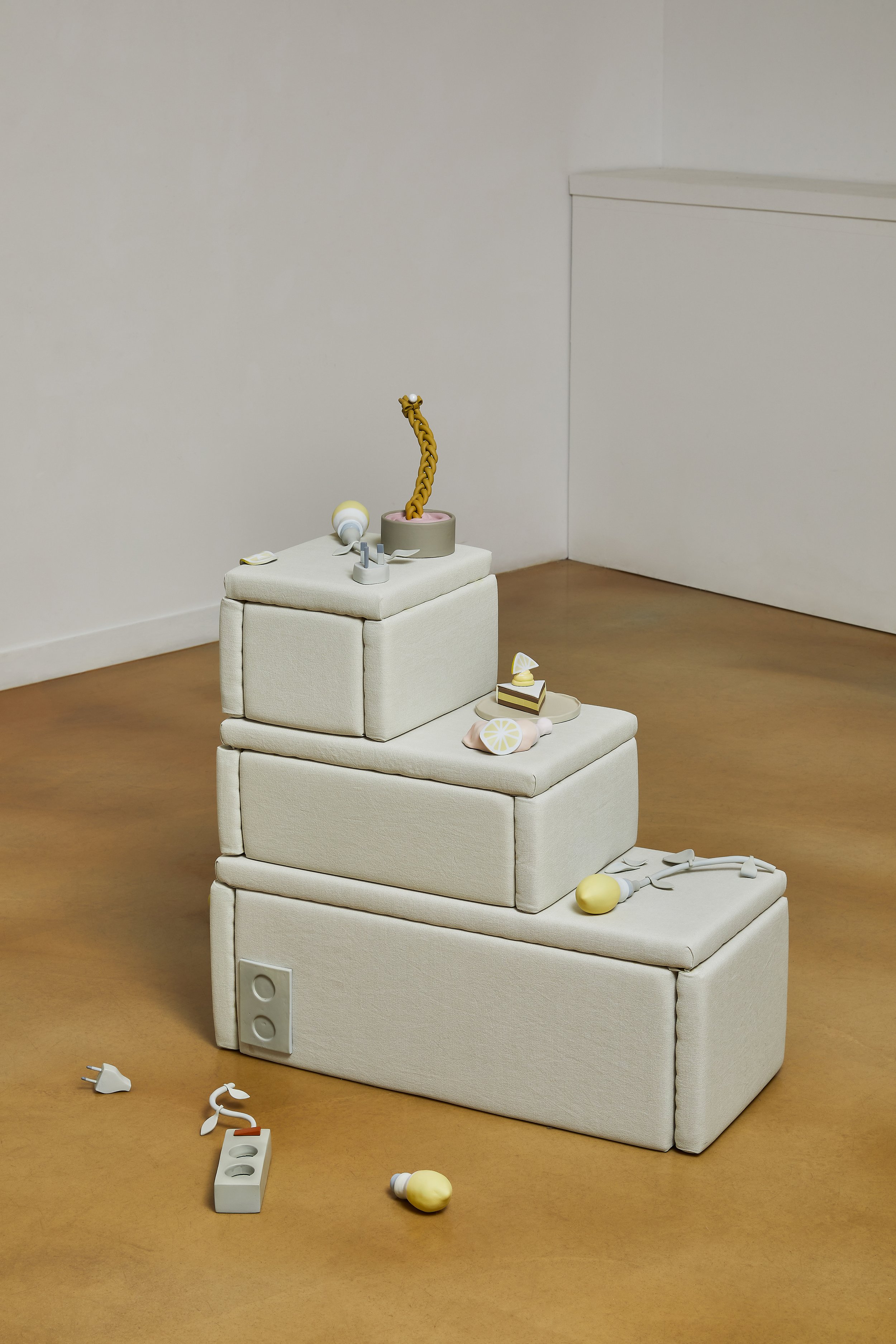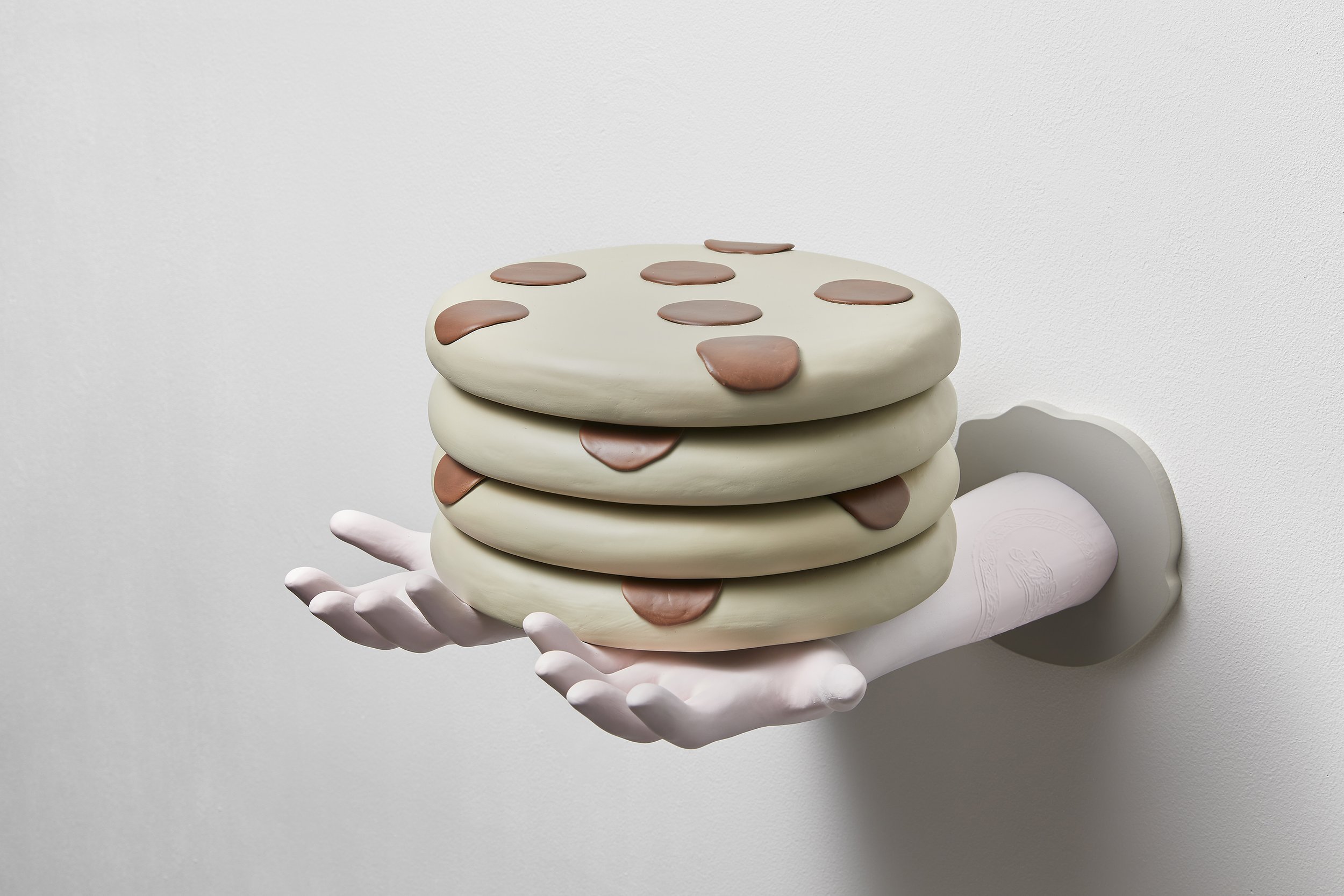Christine Lee

"I see my work as a quest to find ways to view the world more widely and deeply... This insists one to see an object free of opinions."
Interview by Richard Starbuck
Could you tell us a bit about yourself and your background? Where did you study?
I grew up in a suburb in Northern Virginia outside of Washington DC then moved to New York City to study graphic design at the School of Visual Arts. I was initially attracted to graphic design because it stressed the practical and essential role of art in everyday life. I gained some professional experience in the field working for Hearst and Condé Nast publications as an editorial designer while still in school and for Penguin Books after graduation. However, working in graphic design often confined me to a cubicle and centred on satisfying the clients’ needs. I found myself wanting to work with art in more diverse ways and started thinking about what design is and what it means to be a designer. This led me to think more deeply about art and consider pursuing fine arts. A couple years later I redirected my career by moving to London where I completed my MA in Sculpture from Royal College of Art.
In your exploration of everyday objects through a surrealistic lens, how do you navigate the fine line between playfulness and the more serious undertones of societal and political commentary in your work?
Balancing playfulness and the more serious undertones is not a particular focus in my work. But I do find it necessary to incorporate both aesthetic methods and accessible subject matter to convey my message to both the artistic and general audience. Hence my work embraces the historical and social narratives surrounding common objects while presenting them through a surrealistic defamiliarization.
Poppies rotate around us, 2023
We squeeze lemon juice on oysters, 2021
Rosary, 2021
Your sculptures and paintings challenge and redefine our perceptions of the familiar. Can you share some insights into how you hope your work will alter the viewer’s relationship with the objects they encounter in their own lives?
I see my work as a quest to find ways to view the world more widely and deeply. My work challenges and redefines our perceptions of the familiar not only to push people to have different perspectives but also to see things as they are. This insists one to see an object free of opinions. In this way people can break the confines of stereotypes and preconceptions when looking at an object and develop new perspectives. I express this idea through my work Stripped which present a watermelon stripped of its rind and stem, resembling the exposure of one’s flesh. The watermelon appears naive and unaffected, allowing my work to explore the object’s identity by its naked form. The work diverges from familiar images of the fruit and leaves the object undefined.
When transforming the meanings and functions of objects in your art, could you describe your process for selecting these items? What draws you to a particular object, and how do you envision its historical and social narratives intertwining within your pieces?
I usually select objects that are universally common, such as certain types of fruit or vegetables. My work aims to blur the boundaries created by stereotypes and to challenge commonly held perceptions, so I find it important to work with objects that are recognised by a large audience. Through my research and works, I find that the more common an object is, the more interesting is its story.
Common objects tend to have been a part of human history for a long time, having functioned and been interpreted in various ways by different people, culture, and places. Therefore, such objects tend to carry a wide range of meanings, some of which contradict one another.
I believe my bicultural background and experience of growing up in a diverse country have also fostered my interest in objects subjected to various interpretations. Growing up in multicultural communities, I often observed the meaning or value of a single object change drastically depending on different customs and cultures. My work expresses the different ideas and stories that coexist behind a single object. I transform objects to show the audience what is hidden by social conventions and reveal the possibility of multiple truths.
Tell us a bit about how you spend your day / studio routine? What is your studio like?
I have always been a night owl. I focus and work better at night. During the day I try to spend time outside the studio doing anything from running errands, going to meetings, visiting galleries or even just catching up with friends. I do almost all these with my dog, a three-year-old black lab. I consider the time I spend outside the studio as a break from work and find it very important to recharging myself. But this doesn’t mean that I don’t think about my work during the day. I believe inspiration comes from everywhere, sometimes very unexpectedly. Subconsciously I’m always looking for something inspiring and interesting all day. After I return to my studio late in the afternoon, I work late into the night. While I work my studio is silent but my dog always keeps me company. I’ve completed some of my favourite works in this studio but after starting to create bigger works from last year, I’m now in a search of a new space.
What artwork have you seen recently that has resonated with you?
I came across some works by Kim Beom and was very intrigued by them. Based on animistic thinking, Kim transforms objects in unique and strange ways. A few examples are a pregnant hammer, a sleeping roasted chicken and a studious ship.
Kim is interested in exploring how a society imparts knowledge, specifically through educational systems and other modes of information circulation, and how that knowledge shapes one’s identity and view of the world.
I really enjoyed Kim’s unexpected transformation of objects to overturn our conventional perceptions of them. While I believe there are some differences between my practice and Kim’s, he shares my interest in shattering stereotypes and presenting the world in an new light.
Fireplace Chitchat, 2021
Getting ready to head out, 2021
News from home, 2023
Welcome Cookies, 2022
Is there anything new and exciting in the pipeline you would like to tell us about?
I’m currently preparing to settle back in New York City. In the last few years, I’ve been living in Seoul. As a Korean American I was curious about working as an artist in Asia and decided to move here for a couple years after my MA in London.
As for exhibitions, I’m currently in a group show called The Big Softie at Soft Times Gallery in San Francisco, California. This is my first West Coast exhibition in the US. I recommend anyone in the city to swing by before the end of February.
I will also be joining in a few days a residency program at the School of Visual Arts in New York City. I’m very excited to return to SVA because I loved my time there as an undergraduate. The residency program is international so I’m looking forward to meeting artists from all over the world. At the end of the program, we will have a group exhibition curated by Sibila Marinella of New Collector’s Gallery in New York City. This will be an online show so it will be accessible wherever you are.
All images courtesy of the artist
Interview publish date: 04/03/2024






